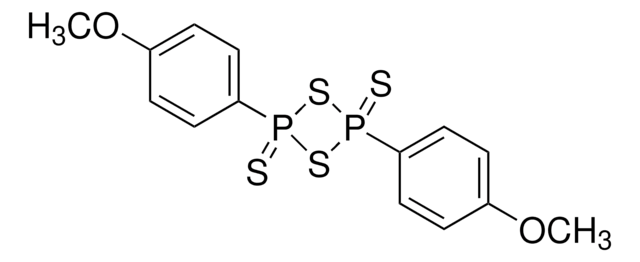M1021
1-Methyl-4-phenyl-1,2,3,6-tetrahydropyridine
Sinônimo(s):
MPTP
About This Item
Produtos recomendados
controle de medicamentos
regulated under CDSA - not available from Sigma-Aldrich Canada
p.e.
128-132 °C/12 mmHg (lit.)
cadeia de caracteres SMILES
CN1CCC(=CC1)c2ccccc2
InChI
1S/C12H15N/c1-13-9-7-12(8-10-13)11-5-3-2-4-6-11/h2-7H,8-10H2,1H3
chave InChI
PLRACCBDVIHHLZ-UHFFFAOYSA-N
Procurando produtos similares? Visita Guia de comparação de produtos
Ações bioquímicas/fisiológicas
Advertência
Palavra indicadora
Danger
Frases de perigo
Declarações de precaução
Classificações de perigo
Acute Tox. 3 Oral - STOT SE 1
Código de classe de armazenamento
6.1A - Combustible acute toxic Cat. 1 and 2 / very toxic hazardous materials
Classe de risco de água (WGK)
WGK 3
Ponto de fulgor (°F)
235.4 °F - closed cup
Ponto de fulgor (°C)
113 °C - closed cup
Escolha uma das versões mais recentes:
Certificados de análise (COA)
It looks like we've run into a problem, but you can still download Certificates of Analysis from our Documentos section.
Se precisar de ajuda, entre em contato Atendimento ao cliente
Já possui este produto?
Encontre a documentação dos produtos que você adquiriu recentemente na biblioteca de documentos.
Nossa equipe de cientistas tem experiência em todas as áreas de pesquisa, incluindo Life Sciences, ciência de materiais, síntese química, cromatografia, química analítica e muitas outras.
Entre em contato com a assistência técnica









